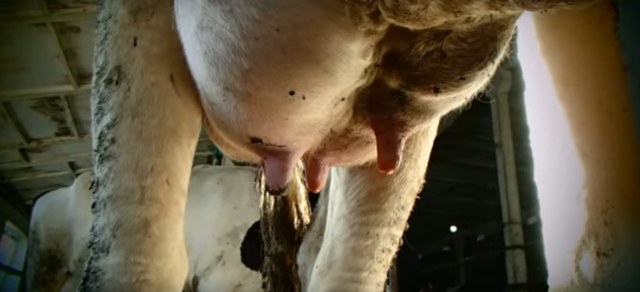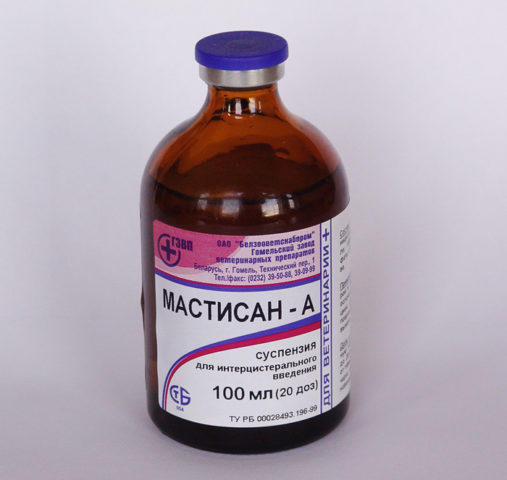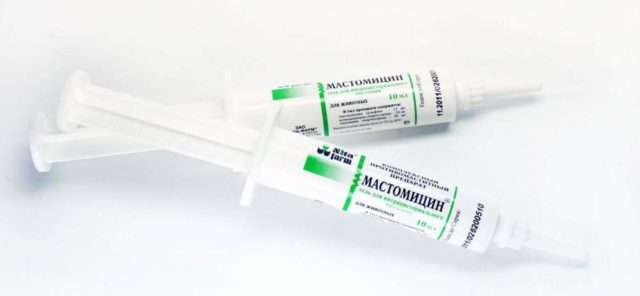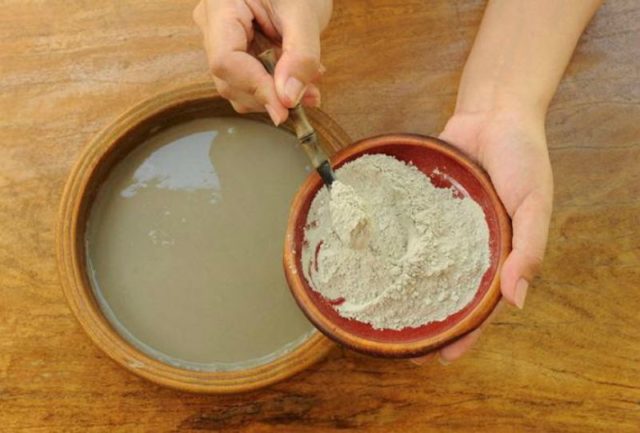Content
Serous mastitis in cows causes a lot of trouble for the breeder. Milk yield and quality of milk decrease; in advanced cases, lactation stops completely. It is difficult to cure an animal without the intervention of a veterinarian.
What is serous mastitis
Serous mastitis is a serious and common disease in postpartum cows. The mammary glands become inflamed and filled with fluid. These kinds of deviations happen for various reasons, but most often due to bacterial infections. They enter the body and affect a third of the mammary gland or the entire udder.
Disease-causing bacteria enter through cracks in the nipples and migrate to other internal organs. The ducts of the mammary gland are compressed, stop working normally, resulting in inflammation. Milk completely changes its composition.
Etiology and pathogenesis of serous mastitis in cows
Serous mastitis develops rapidly and affects a third of the herd after calving. That is why it is important to know the main causes of its occurrence, the rules of treatment and prevention.
The medical history begins with microbes entering the cow's blood and lymph. Serous mastitis stops the production of the hormone oxytocin, which is responsible for the amount of milk. The metabolism in the tissues of the udder is disturbed. The inflammatory process begins with more or less pronounced symptoms of mastitis. They are joined by the soreness of the udder.

It is difficult to determine serous mastitis without sufficient experience.
If you do not attach importance in time and do not treat serous mastitis, then it passes to the milk ducts, a more serious stage of the disease begins.
The main reason for the development of serous mastitis is a decrease in immunity after calving, but there are other factors:
- postpartum complications;
- damage to the udder;
- gastrointestinal disease;
- unsanitary conditions of detention;
- incorrect and incomplete milking of a cow.
Postpartum complications are often observed in first-calf heifers when endometriosis develops or the afterbirth does not come out completely. Serous mastitis is caused by mechanical damage to the udder, various diseases caused by improper feeding and unsanitary conditions in the cows' house. Very often, low-quality milking can become the cause of serous mastitis. Milk residues gradually accumulate in the udder, which leads to an inflammatory process.
Clinical signs of serous mastitis in cows
The inflammation begins suddenly and proceeds quickly, already in the first day you can notice that the animal is behaving suspiciously. The very first symptoms of mastitis, by which one can suspect something was wrong, are lethargy and lack of appetite. In the future, they are joined by manifestations characteristic of serous mastitis:
- the udder becomes hard, swells, soreness appears on palpation;
- the cow is irritable, fearful;
- udder tissues change color, turn red;
- the body temperature of the animal rises, the udder becomes hot;
- milk acquires an uncharacteristic bluish tint, flakes appear in it;
- the amount of milk drops sharply.
The initial symptoms of serous mastitis are very similar to normal congestion, but gradually the picture clears up. There are distinctive differences to keep in mind.When stagnant, the udder remains soft, to the touch like dough, and with serous mastitis, it immediately hardens.
How to treat serous mastitis in a cow
The prognosis for the treatment of serous mastitis is favorable. If at the first symptoms you go to the veterinarian, then after 10 days the cow will be healthy. However, if microbes have entered the alveolar part of the mammary gland, then the disease can become chronic. In the most advanced case, complications arise in the form of tissue necrosis, which can be fatal.
For the treatment of mastitis to be successful, it must be comprehensive and include a number of activities. To begin with, a sick cow is separated from other individuals, transferred to a stall. In her diet, mainly dry food should be present, watering is temporarily limited. After that, massage is done and the contents of the udder are decanted. Milking is carried out 4-5 times a day, excluding at night.

In order not to infect an infection, sterility must be observed during work.
In case of severe damage to the udder, oxytocin injections are injected so that the exudate passes away more easily. Also, to clean the ducts, rinse with sodium bicarbonate solution. For disinfection, antibacterial therapy is used, in addition, ointments and warming dressings are applied. The course of antibiotics is at least five days.
Warming ointments and gels are aimed at resorption of clots in the udder. They are applied in a thin layer. Vishnevsky ointments, ichthyol and heparin ointments are suitable. During the treatment of serous mastitis, the cow must be isolated from drafts. The room should be warm but well ventilated. This promotes the speedy resorption of clots.
Of the drugs that have passed certification and have shown the best results in the treatment of serous mastitis, the following can be distinguished:
- «Mastisan-A ". A drug based on streptomycin and sulfadimezin, which give a persistent antibacterial effect. Available in the form of a liquid for injection in 5 and 20 ml. In the initial stages of the disease, one injection is enough. In advanced cases, the solution is injected every day until complete recovery. Milk is used for food after three days.
- "Mastomycin". Gel based on gentamicin and lidocaine. It gives a good analgesic effect, in addition, it fights various bacterial microflora. The drug is completely ready to use. At the initial stage, two injections are made every 12 hours. In severe cases, up to six injections are allowed with the same interval.
- "Suit Weixim". German drug that has a positive effect on the condition of the animal. Two injections are enough for recovery.
You can also use other antibacterial drugs that are injected through the teat into the udder. However, the dosage and accuracy of administration must be strictly observed. The wrong procedure will add problems to the treatment of mastitis and cause additional infection. This is fraught with complications.
Folk remedies for the treatment of serous mastitis
Some livestock breeders resort to folk remedies for treating serous mastitis. For this, ordinary laundry soap is actively used. All the affected areas are rubbed well with it, left for 30 minutes, after which they are washed off with warm water and wiped dry. The procedure is repeated until complete recovery.
Also, a clay talker helps against edema and infections with serous mastitis.
Compresses are placed for 20-30 minutes.
In the initial stages of mastitis, herbal infusions are added to the drinking of sick cows. Decoctions of chamomile and nettle are suitable. They can also be used for compresses and lotions.
Preventive actions
To avoid such an unpleasant disease in cows as serous mastitis, you need to take care of prevention. The conditions for keeping the animal and quality care, as well as good feeding, are of great importance. Heifer nutrition should be balanced, contain all the necessary vitamins and minerals. In addition, for the prevention of serous mastitis, one should not neglect routine preventive examinations.
Sterility must be observed during milking. All equipment and supplies must be clean. The udder of the heifer must be thoroughly washed and wiped with disinfecting solutions. Particular attention is paid to the care of pregnant and recently calved cows.
Conclusion
Serous mastitis in cows can be completely cured if you seek qualified help in time. However, in any case, you will have to resort to antibiotic therapy to avoid re-infection. In addition, to restore immunity and support the body, it is necessary to actively give the cow vitamin complexes. In addition, special attention is paid to prevention.













